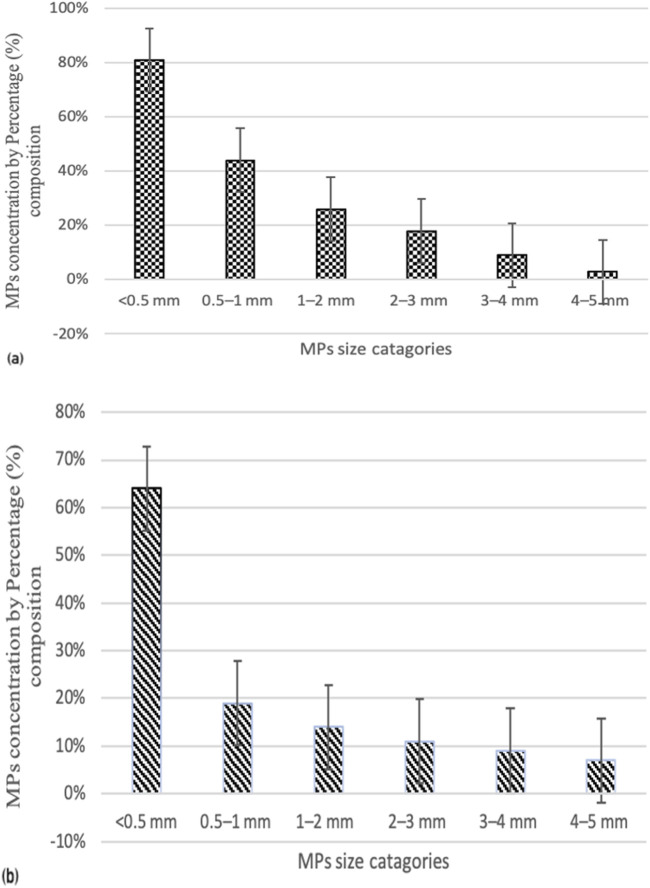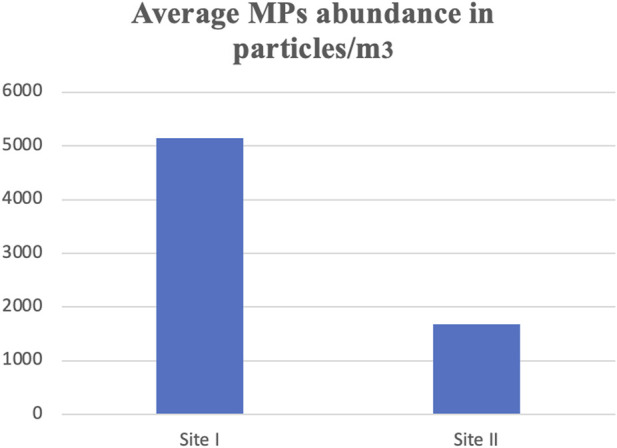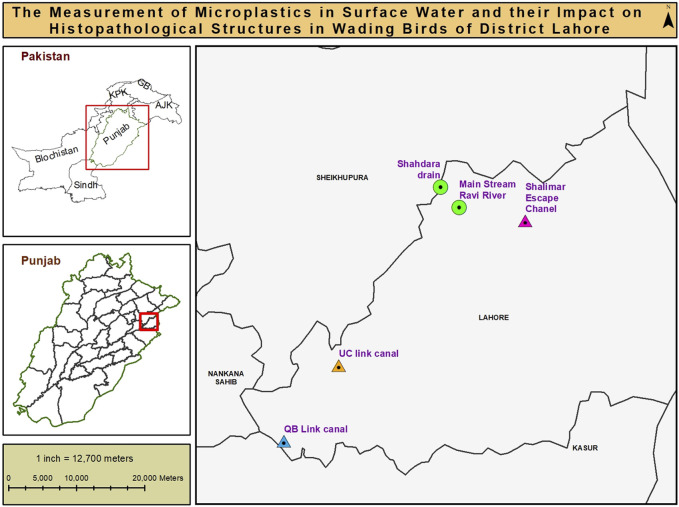拉合尔地区地表水中微塑料的测定及其对涉禽组织病理结构的影响。
摘要
由于塑料制品的广泛使用,塑料在全球范围内被认为是一种重大威胁,特别是对大都市地区。本研究首次记录了微塑料污染及其对红湿田鸡翅的影响。微塑料(MPs)的浓度是在不同地点的地表水中测量的,包括运河和排水沟,这是巴基斯坦拉合尔大城市MPs污染的主要来源。MPs浓度最高的是拉维河干流,平均浓度为5150±7.5粒/m3。此外,考虑到MPs的不同形状,拉维河干流遗址I的纤维含量最高,平均浓度为92.4±0.3颗粒/m3,最低平均浓度为29.9±0.1颗粒/m3。沙达拉沟ⅱ区以碎片为主,平均浓度最高为42.6±0.3,最低为21.7±0.1。化学分析显示,大部分碎片、纤维;珠子属于聚乙烯类,而板材属于聚丙烯类,泡沫属于聚苯乙烯类。粒径在400 μm ~ 5 mm之间的大颗粒MPs在两个位置都最为丰富。小于0.5 mm的颗粒以Site I最多(56%),而0.5-1 mm(24%)、1-2 mm(16%)、2-3 mm(8%)、3-4 mm(5%)和4-5 mm(3%)的颗粒所占比例最低。发生频率(%FO;死禽中塑料的患病率为89.7%。总共分析了120个项目:64个纤维,23个碎片,10个泡沫,14个薄片,9个珠子。在分析的所有摄入塑料碎片中,聚乙烯所占比例最大,占样本的46%。与Site II (Shahdara Drain)相比,Site I(拉维河主流)的鸟类器官中100%含有塑料制品。进行定量和定性组织病理学分析,以检查MPs暴露对野生物种健康的流行率、频率和组织学改变指数(HAI)的变化。对红喉田凫的肝脏和肾脏组织样本进行了分析,并进行了比较,以评估鸟类器官的损伤程度和改变程度。本研究评估了摄入多聚体多糖(MPs)的影响,它会引起V. indicus的炎症和解剖反应。观察到明显的组织损伤,包括明显的炎症反应,许多肾小管上皮细胞明显肿胀,核固缩,这是坏死和凋亡的主要原因。站点I的患病率和频率明显高于站点II。肝脏和肾脏的患病率最高,分别为90%和85%,表现为0.5-1 mm大小的MPs引起肝细胞变性和肾小管上皮细胞坏死。最低的患病率为5%,在4-5毫米大小的MPs中观察到鼻窦充血和充血。频率和患病率依次为:0.5 mm > 0.5-1 mm > 1-2 mm > 2-3 mm > 3-4 mm > -5 mm > 0 mm (0 mm为对照)。这项调查有助于增加淡水生态系统中MPs丰度的记录,并为拉维河MPs污染的未来研究提供基线。



Plastics are globally considered a significant threat, particularly to metropolitan areas, due to the extensive use of plastic products. This research is the first of its kind to document microplastics contamination and its effects on Red wettled lapwing (Vanellus indicus). The concentration of microplastics (MPs) was measured from surface water at different locations including canals and drains, which are the primary sources of MPs pollution in the metropolitan city Lahore, Pakistan. The highest MPs concentration was recorded in the main stream of the Ravi River, with an average concentration of 5,150 ± 7.5 particles/m3. In addition, considering the different shapes of MPs, fibers were found to be most abundant at Site I (Main Stream of River Ravi), with the highest mean concentration of 92.4 ± 0.3 particles/m3, whereas the lowest mean concentration of 29.9 ± 0.1 particles/m3 was observed. In contrast, fragments were predominant at Site II (Shahdara Drain), with the highest and lowest mean concentrations of 42.6 ± 0.3 and 21.7 ± 0.1particles/m3, respectively. Chemical analysis revealed that most fragments, fibers; and beads belonged to the polyethylene class, while sheets were categorized as polypropylene and foam as polystyrene. The large MPs with particle size ranging from 400 μm to 5 mm were most abundant at both locations. Particles smaller than 0.5 mm were the most prevalent (56%) at Site I, while Site II showed the lowest proportions for size ranges 0.5-1 mm (24%), 1-2 mm (16%), 2-3 mm (8%), 3-4 mm (5%), and 4-5 mm (3%). The frequency of occurrence (%FO; prevalence) of plastics in necropsied birds was 89.7%. A total of 120 items were analyzed: 64 fibers, 23 fragments, 10 pieces of foam, 14 pieces of sheet, and 9 beads. Of the total ingested plastic debris analyzed, the largest proportion was comprised of polyethylene, making up 46% of the samples. Birds from Site I (Main Stream of River Ravi) had 100% of their organs containing plastic items compared to those from Site II (Shahdara Drain). Quantitative and qualitative histopathological analyses were performed to examine variations in prevalence percentage, frequency, and histological alteration indices (HAI) as a consequence of MPs exposure on the health of wild species. Tissue samples from the liver and kidneys of the Red-wattled lapwing were analyzed, and comparisons were made to assess the extent of damage and degree of alteration in bird organs. The study evaluated the impacts of ingested MPs, which induced inflammatory and anatomical responses in V. indicus. Significant tissue damage was observed, including considerable inflammatory responses, evident cellular swelling in many renal tubular epithelial cells, and pyknotic nuclei, which were major causes of necrosis and apoptosis. Prevalence percentage and frequency were significantly higher at Site I compared to Site II. The highest prevalence percentages in the liver and kidneys were 90% and 85%, respectively, manifesting as degeneration of hepatocytes and necrosis in renal tubular epithelial cells in response to 0.5-1 mm sized MPs. The lowest prevalence percentage, 5%, was observed as congestion of sinusoids and hyperemia in response to 4-5 mm sized MPs. The frequency and prevalence percentages followed the order: 0.5 mm > 0.5-1 mm > 1-2 mm > 2-3 mm > 3-4 mm > 4-5 mm > 0 mm (0 mm as control).This investigation contributes to the growing documentation of MPs abundance in freshwater ecosystems and provides a baseline for future studies on MPs pollution in the Ravi River.

 求助内容:
求助内容: 应助结果提醒方式:
应助结果提醒方式:


